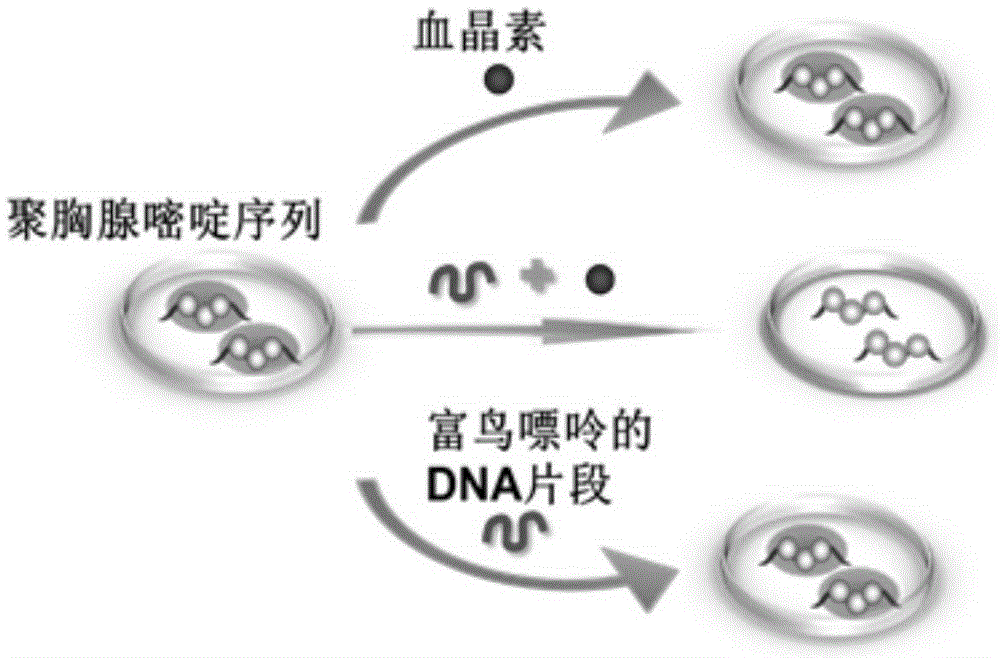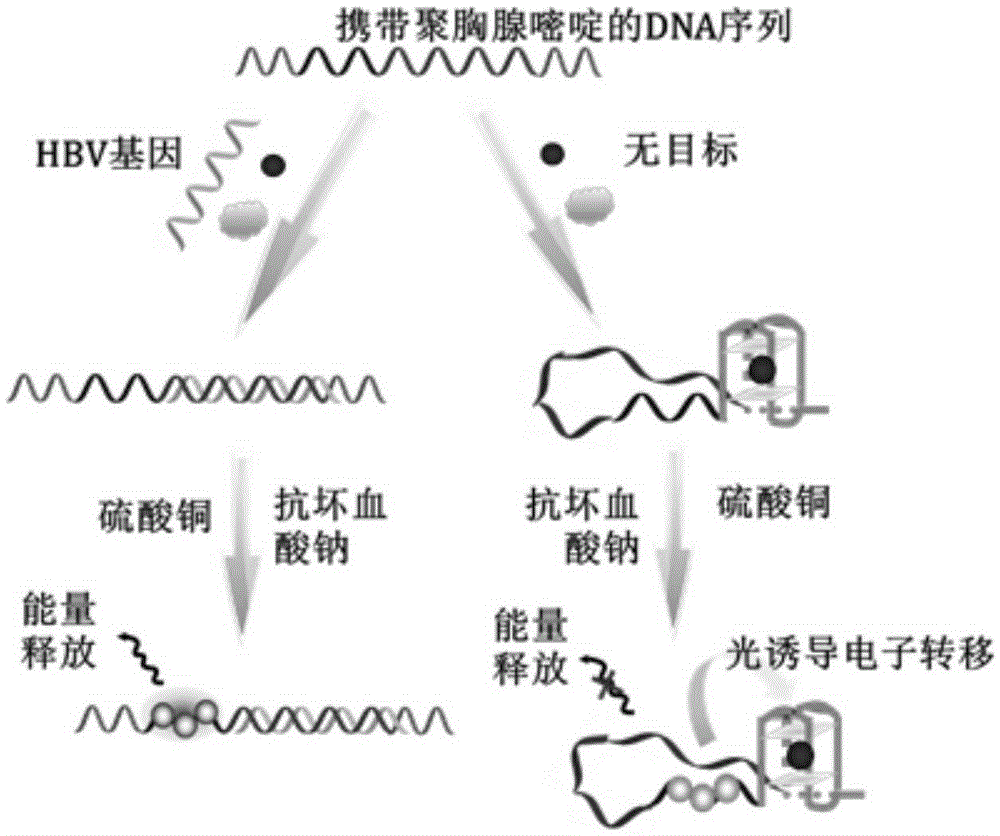Method for preparing fluorescence biosensor and application of fluorescence biosensor
A biosensor, fluorescence technology, applied in the field of fluorescent biosensor, application of detecting HBV gene, and preparation of fluorescent biosensor, can solve the problems of complex, time-consuming and lengthy detection process, achieve low detection limit, avoid chemical labeling and modification , the effect of simple operation
- Summary
- Abstract
- Description
- Claims
- Application Information
AI Technical Summary
Problems solved by technology
Method used
Image
Examples
Embodiment 1
[0045] Verify that G-quadruplexes can quench CuNPs:
[0046]a. Add 1 μL of polyT30 solution to 80 μL of 10 mM MOPS (3-(N-morpholino) propanesulfonic acid) buffer solution at pH=7.6, then add 5 μL of CuSO4 solution (10 mM) and 120 μL of sodium ascorbate solution ( 100mM), to obtain mixed solution 1, to obtain fluorescent CuNPs, and to detect the fluorescence intensity;
[0047] The preparation method of the polyT30 solution is as follows: dissolving polyT30 into 10 mM MOPS (3-(N-morpholino)propanesulfonic acid) buffer solution at pH=7.6, so that the final concentration of polyT30 sequence is 500 nM.
[0048] b. Take 1 μL of G4 solution (500 nM), 0.5 μL of hemin solution (1.0 μM) and 5 μL of KCl solution (50 mM) into 200 μL of MOPS (10 mM MOPS (3-(N-morpholino) propanesulfonic acid) pH = 7.6 buffer solution), after culturing in a dry box at 37°C for 2 hours, a mixed solution 2 was obtained; (G4 gene sequence and hemin and K + Mix together to form a G-quadruplex structure, and ...
PUM
 Login to View More
Login to View More Abstract
Description
Claims
Application Information
 Login to View More
Login to View More - R&D
- Intellectual Property
- Life Sciences
- Materials
- Tech Scout
- Unparalleled Data Quality
- Higher Quality Content
- 60% Fewer Hallucinations
Browse by: Latest US Patents, China's latest patents, Technical Efficacy Thesaurus, Application Domain, Technology Topic, Popular Technical Reports.
© 2025 PatSnap. All rights reserved.Legal|Privacy policy|Modern Slavery Act Transparency Statement|Sitemap|About US| Contact US: help@patsnap.com



